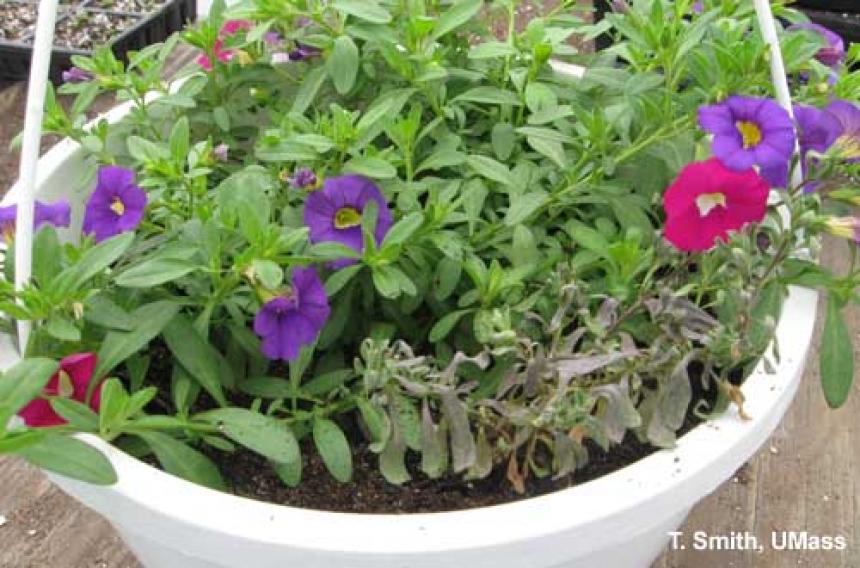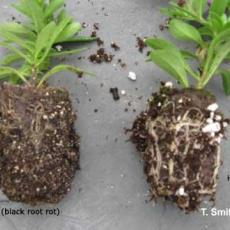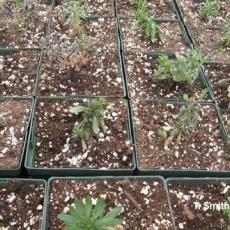Thielviopsis root and stem rot, often called Black rot, is caused by Thielaviopsis basicola. Thielaviopsis can arrive on healthy looking plugs or cuttings and when plants are stressed in any way, the disease progresses. Early symptoms show up as stunted growth and roots make little progress after transplanting. In mixed planters, one plant will decline as seen here.
Practice good sanitation, starting with clean growing media, pots, flats, and plant material. Avoid overwatering and overfertilizing. Thielaviopsis is favored by alkaline pH and can be managed by maintaining the pH of the media below 5.8. Fungicide applications will not cure affected plants, but will prevent infection of healthy plants. Discard infected plants and remove plant debris and infested soil. Drench the soil with Cleary's 3336,Fungo Flo, Contrast, Medallion, or Terraguard. When stem rot is present, fungicide must contact the stems for effective control. Cleary's 3336 and Fungo Flo consist of the same active ingredient, thiophanate methyl, and should be rotated with Contrast, Medallion, or Terraguard to prevent resistance development.



